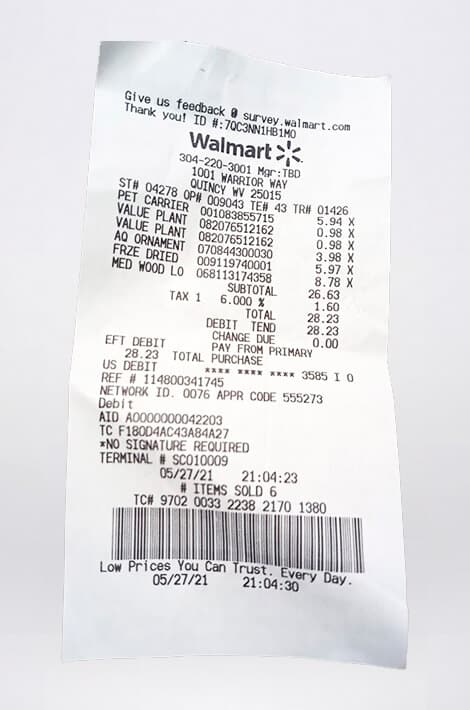Last Updated on January 9, 2025
Data entry has a long and storied history of burdening organizations with high operational costs and inefficient workflows. Turnaround times are laborious and slow, often error-strewn, and inconsistent, not to mention the inherent security risk if you choose to outsource the work.
Thankfully, OCR technology eradicates all of these problems. Paper documents can be scanned, and digital copies made, saving much time and effort. Now, as accurate OCR recognition is, innovation doesn’t stand still. By its very nature it evolves. Enter Intelligent Character Recognition (ICR).
Interested in learning how accurate OCR and ICR are, and how intelligent character recognition can help receipt data extraction? We’ve got the lowdown for you.
How Accurate Is OCR?
OCR has come a long way in the last few years. The best receipt OCR technology, like Tabscanner uses, can achieve 98% or more accuracy on core line data. This means that a scanned document or receipt of 100 characters will recognize and digitize 98 characters perfectly – and that’s the worst-case scenario. It’s not unreasonable to expect every document or receipt will be 100% digitized every single time.
What Is ICR?
Simply put, intelligent capture recognition (ICR) is advanced OCR, or more specifically, technology better equipped to recognize and digitize fonts characters of myriad of different shapes, sizes, and styles.
Most ICR features a self-learning referral system, known as a neural network, which automatically updates the recognition database for new character patterns. So, basically, it evolves the more that it is used, and will be able to recognize and digitize any structure documents and receipts. Basically, ICR offers character-level recognition.
If OCR is 98% accurate, ICR for receipts and paper documents is 100% accurate, thereby providing the utmost assurance and confidence that no data will be lost in the transfer. And it is this technology that Tabscanner’s API uses.
What Is the Difference Between OCR and Receipt ICR?
Whilst OCR and ICR may sound similar, in reality there are fundamental differences between each. OCR is generally used as a record-keeping system, translating structured data into digital format. Businesses use OCR for different purposes, including converting documents and even publishing text on a website.
ICR is by definition more intelligent. It can be used to digitize handwritten documents, such as receipts, invoices, or paper documents, such as proof of ownership or wills. It’s provides a much deeper understanding of the text and is therefore more accurate.
Sector-Wide Document Digitization
As one of the key aspects of digital transformation, ICR plays a significant role in establishing a digital workforce – something that has become absolutely necessary in the current times that we find ourselves living in.
By automating handwriting recognition, businesses can increase employee productivity, eliminate manual data entry, and optimize remote working processes. More importantly, employ an ICR receipt API and you will reduce human expense data errors by as much as 90%.
This is especially helpful for sectors which still rely on paper receipts for proof-of-purchase, such as retail, education, even government.
In What Sectors Is ICR Employed to Great Effect?
There are two clear sectors that would benefit greatly from integrating ICR – and, when you think about it, they’re really quite obvious.
Healthcare
It should come as little surprise that ICR for receipts is one of the most common uses of the technology. In fact, so trusted is the technology that healthcare institutions are using it for medical billing.
In the USA alone, it has been estimated that four in every five medical bills has a mistake. Now, as shocking as that sounds, what’s more shocking is that these mistakes cost the US $68 billion annually. Clearly, better processes are needed, which is why ICR is so important.
By embedding ICR into medical receipts, the healthcare sector can streamline billing management and – more importantly – reduce costly errors.
Moreover, digitizing handwritten medical records can also be achieved with ease, allowing practitioners to have clear access to accurate patient information with ease.
The Finance Sector and Financial Management
Since the outbreak of COVID-19, we’ve seen more and more businesses switch to a fully digital infrastructure. For some businesses this has been fairly seamless and straightforward, but other sectors not used to digital operations have faced a challenge.
One such sector is finance. Customer onboarding and operational management have proved especially challenging for businesses during lockdown. ICR can solve that problem. Employers can augment data input with automated document ICR, integrating information into existing infrastructures with ease.
But, perhaps, the most obvious reason to implement an ICR receipt API is to effectively manage expenses. In lockdown, everyone is working remotely. Some people are lucky enough to work for a business that allows them to claim for office chairs, equipment, even their mobile and internet usage. For that they need to send receipts to employers.
Can they do this without a statement or receipt? Digitization of receipts and documents is the only way that employees can prove their expenses and be reimbursed. To get an accurate digital copy of paper documents, employees will need the best ICR for receipts – they’ll need to use Tabscanner’s API.
Intelligent Data Capture Is the Future
Technological innovation doesn’t reach a peak and then stop getting better. The sky’s the limit. This has been evidenced throughout our history and will only continue was we enter 2021 and continue to adjust to life whilst fighting COVID-19.
This begs the question, are you happy with not having access to the most efficient and, let’s face it, absolute best technology to continue managing your expenses in our remote world?



